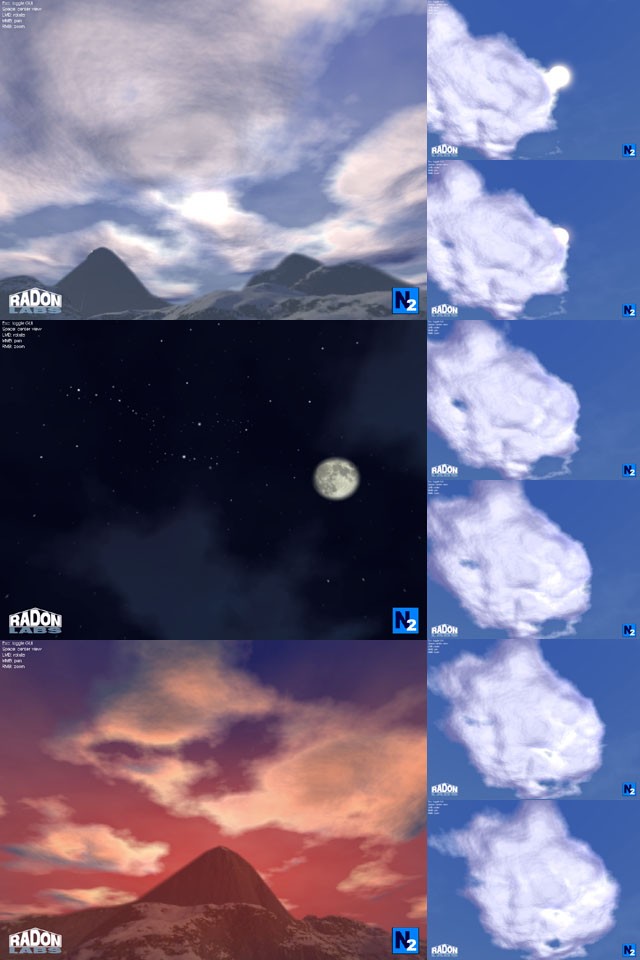 |

Submitted by , posted on 04 July 2005
|
 |

Image Description, by

The picture shows some screenshots of the dynamic skysystem I developed for my degree dissertation. For this purpose I used the opensource 3D-engine Nebula2.
*_Features:_*
_visualisation of the following phenomenons:_
skycolor
sun/moon
clouds
stars
atmospheric perspective
_high versatility through:_
many mighty parameters
changeable textures
_simple configuration and control:_
script
editor
program interface
programmable course of day via simple state-objects
_expandability through modularity:_
add new objects via script
possibly assign a new shader
possibly add new rules to the sky-system
_low computation cost through:_
scaleable sky-resolution
alterable amount of cloud-layers
scaleable update-time
seperately activation of sky-elements
The computation of all phenomenons is done on the GPU. Only the interpolation of parameters from different states needs some CPU calculation. The clouds are a pure 2D-visualisation, so it is not possible to fly through them. The minimum requirement is shadermodel 2.0, as the amount of instructions ist too high for shadermodel 1.3.
For more information, pictures, videos and a demo check my website http://www.alienstealth.de/mig/skysystem.
Michael Gehling
|
|

